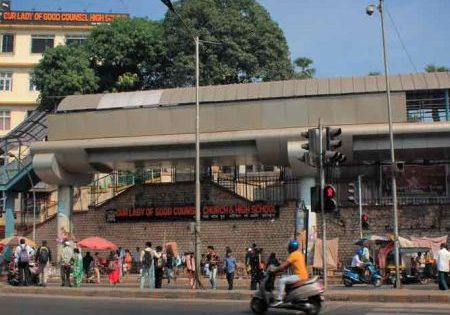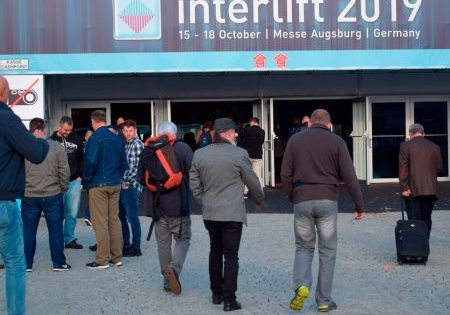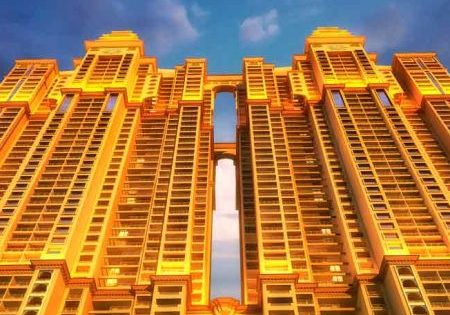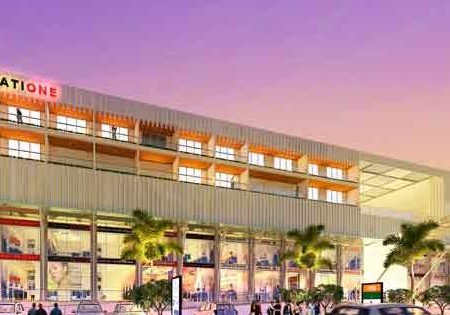The Transformation of Mumbai Metro
Jan 1, 2020

Cdr. Ashish Saxena (AS), senior deputy general manager (E&M), MMRCL, shares perspectives on Mumbai’s first underground metro line and the significance of vertical transportation for such projects with your author (SSP).
SSP: What are the aspects that set the Mumbai Metro Line 3 (MML3) project apart?
AS: Though 2,150 trains carrying millions of Mumbaikars to their destinations hurtle through the city, for the 7.5 million-odd commuters, every day brings with it the challenge of searching for space in a train that cannot hold a pebble more. Time has truly come for “the lifeline” of Mumbai to change Metro to a grade-separated, rail-based mass rapid transit system.
MML3 is one of such key projects to improve the transportation scenario in the financial capital of India. The project, a 33.5-km-long corridor running along Colaba-Bandra-SEEPZ, envisages to decongest the traffic situation in Greater Mumbai.
It aims to provide a mass rapid-transit system that would supplement the inadequate Mumbai suburban railway system by bringing metro closer to the doorsteps of the people. With full-scale operations of MML3, the city would witness significant reduction in traffic volumes, and the local transit facility would get a boost. Upon completion, this fully underground corridor with 27 stations would connect six business districts, 30 educational institutes, 30 recreational facilities and domestic and international airport terminals. It will have five interchange points for suburban railway and one each for monorail and Versova-Andheri-Ghatkopar Metro-1.
MML3 has been envisioned to provide modern transportation for the 21st century. State-of-the-art technologies are to be harnessed during construction to ensure protection to existing building structures. To ensure no trespassing on the tracks, the stations would be provided with platform screen doors. They would also be facilitated with contactless automatic fare collection machines.
MML3 is one of the most complicated projects in the world due to the extremely constrained areas in Mumbai through which the line is aligned. The challenges of taking care of heritage buildings, water pipelines, sewer lines, dense residential areas, narrow roads, hard rock and heavy traffic in Mumbai during construction activities are only some of the issues. But, all these challenges are being overcome with both innovative and traditional engineering practices.
SSP: What has been the progress made so far, and when can we expect it to be operational?
AS: Work on MML3 is divided into 20 packages, out of which 18 have already been awarded. The tendering process of the remaining two packages is in progress. The Saxena works under the awarded packages are in
various stages of design and execution. Overall, about 50% of the project has been completed. This can be broken down as 70% of tunneling work and 82% of excavation work having been completed. Works on 21 Cut and Cover stations are in progress, along with work on 5 NATM stations. Work in the depot is 25% complete. Phase I of the project (from Aarey to BKC) is planned to commence by December 2021, and Phase II (from Dharavi to Cuffe Parade) is planned to commence by June 2022.
SSP: What is the significance of escalators and elevators for the project?
AS: Since MML3 will be completely underground, with the platform level as deep as 20-25 m from the ground/street level, fast, smooth and safe circulation of passengers in and out of the system is of paramount importance and a prime objective of the system design. The escalators and elevators to be provisioned for MML3 are going to be the key components of the system to ensure this objective.
SSP: How many escalators and elevators will be installed for the Mumbai Metro III project? Can you give us other details on them, such as how they were selected?
AS: MML3 is planned to have 475 escalators and 185 elevators installed. The contractors were selected through a rigorous process of international competitive bidding following the guidelines and standard bidding documents promulgated by the Japan International Cooperation Agency (JICA), which is funding the project, along with the Government of India and the Government of Maharashtra. The prospective bidders were first shortlisted through a prequalification process based on key technical, financial and contractual criteria. The bids were then invited from the prequalified bidders following a single-stage, two-envelope process. The technical bids were evaluated first based on the technical criteria/specifications per the tender documents. Bids that passed the technical evaluation were approved by JICA and then evaluated for their financial attributes. After obtaining approval of JICA on the financial evaluation reports, the contracts were awarded to the lowest evaluated bidders.
SSP: Which challenges are involved in installing escalators and elevators for the underground stations?
AS: Installing escalators and elevators in underground stations is more challenging and complicated as compared to installing them at elevated or at-grade stations. Some of the typical challenges are:
- Lowering of equipment (cutting out space, lowering methods, etc.)
- Movement of equipment within the station
- Limited space (requiring custom designs)
- Lighting/illumination arrangement (due to working in dark areas)
- Confined spaces, which require more accuracy in installation
SSP: Given Mumbai’s climate, especially during the monsoon season, what would the operation and maintenance of elevators and escalators entail? How will this be managed/supervised?
AS: Due to high footfalls anticipated in MML3, it would be imperative that all escalators and elevators are kept in operational condition continuously during operation hours. To ensure this, MML3 is adopting the philosophy of predictive maintenance, rather than preventive, maintenance. This means there will be real-time online health monitoring of the various critical components of these systems by both MML3 and the contractor’s maintenance teams. In case any critical component is showing signs of degradation of operational health, its fault alarm would autogenerate and be sent to concerned personnel through a text or app. The component would then be examined as soon as possible by a maintenance team and be repaired or replaced to minimize the risk of it becoming defective during operation and resulting in system shutdown during operating hours.
Furthermore, Mumbai is known for its heavy rainfall and flooding during its long monsoon season. This brings its own complexity in operations and maintenance of any electrical/electronic system. A few related challenges are:
- Risk of ingress of water in electrical/electronic panels, particularly those close to metro entry/exit points: this requires special arrangements in the design of the station entries and exits.
- Keeping the system safe from high humidity due to long spells of wet and humid conditions: this is being ensured by designing the systems with required Ingress Protection ratings and blowers in the panels/areas where required.
- Keeping the escalators and elevators clean, as a huge amount of muck, soil and mud comes with the passengers entering the stations. Requirement of more cleaning means more downtime, which has to be managed during non-revenue hours so passengers are not inconvenienced during revenue hours.
- During wet conditions, special care would be required to keep the surfaces of the elevators and escalators dry.
SSP: As public infrastructure in Mumbai improves, do you see the role of elevators and escalators at metro stations increasing?
AS: There is a major push on the infrastructure front across Mumbai. At present, there are 12 metro lines under various stages of tendering/design/execution in the city. There are plans to integrate these lines with various existing public areas and other modes of transportation. This would require seamless movement of passengers between these connected areas and metro stations, as well as within the metro stations, which would be feasible only by provisioning heavy-duty elevators and escalators at all these places. This means there is a huge demand for escalators and elevators from these metro projects being executed at Mumbai.
SSP: Which kind of escalators and elevators are suitable for public places like metro and railway stations, and what are the parameters considered by Mumbai Metro Rail Corp. Ltd. (MMRCL) when selecting them for such places?
AS: In a city like Mumbai where there is limited possibility of expanding the road infrastructure, suburban train services have been the only mode of mass transportation. But, the suburban train system also has the limitation of being fixed in its alignment along the old railway infrastructure. Furthermore, suburban train services have already reached their maximum capacity. Hence, the mass rapid transit system projects being constructed in Mumbai connecting the areas that do not have rail connectivity are going to be the lifeline of the city.
As the population of Mumbai increases each year, and the new metro lines are going to cover the city’s unconnected areas, it is anticipated that these metro lines will be fully loaded from their first day of operation. This would mean that for almost 20 hr per day, the elevators and escalators will be operating continuously. To cater to that heavy passenger load and operation time, heavy-duty escalators and elevators would be required for these metro lines. Such escalators typically have a much larger, heavier truss structure, increased chain and motor sizing, heavier step/track construction and a larger, heavier handrail drive system that, combined, make these units capable of maximum performance at full-load, around-the-clock capacity. Similarly, heavy-duty elevators are typically designed with gearless permanent-magnet synchronous motors with 180 motor starts per hour for 20 hours a day, 7 days a week. Such elevators should be designed for a minimum 1 million operations per year.
To ensure contractors have the capability to supply the heavy-duty escalators and elevators required, their past proven experience of supplying similar equipment is scrutinized during the prequalification process. Further technical evaluation of their bids against the technical specification per the tender document is also conducted. Proof of satisfactory performance of such systems for a reasonably long time in other similar environments is sought from the contractor in the form of a client certificate.
SSP: In terms of traffic flow and public transportation, Asian countries like Japan, Vietnam and China resemble India. Do you foresee India adopting any of their strategies?
AS: MML3 has appointed a consortium of four reputed international companies (AECOM, Padeco, Louis Berger and Egis) as general consultant for the project. This consortium brings with it experience of executing metro projects in various countries across the globe. Apart from that, all the contractors employed in the project are either reputed multinational companies with a presence in India or in a joint venture or consortium with international players in respective fields. Hence, MML3 is adopting all the best practices followed in similar metro projects, not only in the Asian countries you mention, but also in any other country across the globe.
Get more of Elevator World. Sign up for our free e-newsletter.









